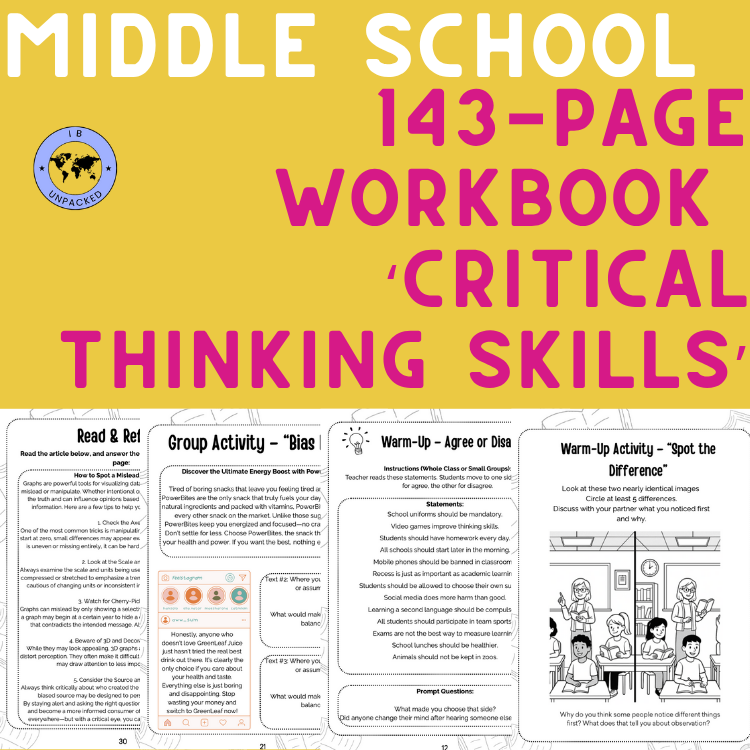“Think Again!” Why MYP Students Need Critical Thinking Skills (and How to Teach Them)
In today’s world, everyone’s talking about critical thinking. Literally. Over 70,000 books have been published on the topic—and that number keeps growing. But while the buzzword is everywhere, how do we actually teach critical thinking in our IB Middle Years Programme classrooms?
Let’s start with the basics. The IB defines critical thinking as analysing and evaluating issues and ideas. That’s broad—but thankfully, the MYP breaks it down into teachable subskills, like:
Observing carefully to recognize problems
Recognizing assumptions and bias
Drawing reasonable conclusions
Evaluating evidence and arguments
Proposing and testing solutions
Considering multiple perspectives
…and many more.
That’s a lot to cover. The key? Don’t try to teach them all at once!!!
Here’s the secret: Choose one critical thinking subskill per unit and teach it explicitly. Don’t just hope students pick it up along the way. Dedicate part of a lesson to unpacking what the skill looks like in action.
Let me show you a practical example that I’ve used in my lessons. As part of my ‘Film Music’ unit, students have to learn to use music composition software, like GarageBand or SoundTrap. There is ALOT (I mean, SO MUCH!) trouble shooting that comes with learning a new software: Being able to log in, figuring out how to add tracks, what to do when something isn’t working, etc. So, as part of this unit, we focus in on the Critical Thinking sub-skill of ‘troubleshooting’. We spend a whole lesson developing trouble shooting skills. I’ll show you how I do it.
We start with a group warmup, which helps to check that everyone is on the same page when it comes to ‘troubleshooting’. You may find that EAL students might struggle with what this word actually means at first.
Then we do a group activity. This is really fun - You can also put these on flashcards and turn it into a ‘What would you do!?’ type game. It also works well as a role play.
A reading comprehension task helps solidify the troubleshooting methods we’ve been exploring so far.
And now it’s practical time! Students have to practise troubleshooting a typical problem they may encounter.
As always, finishing with a self-reflection and some future goals is an crucial part of the learning process.
The whole thing takes me one lesson, which is an hour at my school. I cannot emphasise enough how much teaching this lesson improves my students’ autonomy and ability to troubleshoot when they start composing. I always teach it BEFORE starting our compositions. In the years when I haven’t done this, the entire composition lesson is spent with students’ hands in the air, needing help to troubleshoot something that they could easily fix themselves. After teaching this lesson, most of my time is spent actually giving them feedback on their composing, and improving their creative choices.
So, this is just one example. There are 19 Critical Thinking sub skills in the MYP, so you will need to check with your MYP Coordinator how they have been spread throughout the year groups and subjects. Remember: ONE ATL skill per unit, don’t try to do more.
I hope you found this helpful. Do want more lessons like this one? I’ve created a Critical Thinking ATL Workbook for middle school students, packed with activities and scaffolded practice across subject areas. It’s designed to slot right into your MYP units.






